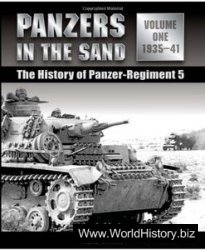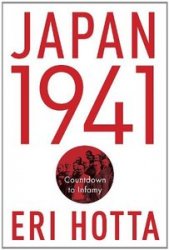In the Italian campaign, he commanded the New Zealand Corps in the Second and Third Battles of Cassino; played a leading role in the advance to and breaching of the Gothic Line, and in the destruction of the German armies south of the Po. He led the final advance on Trieste, which he entered on May 2 1945. WGFJ.
Friedrichshaften FF 33 (German, WWI). Two-seat patrol seaplane. First deliveries of FF 33a March 1915. Developed and improved through several variants; widely and effectively used as fighter-reconnaissance and shipping-strike aircraft. At least 725 (all variants) ordered. One 150hp Benz Bz III engine; max. speed 85mph fl36kph); two 7.9mm machine guns, small bomb load.
Frigate. A class of warship smaller than destroyers but larger than corvettes. They were extensively used for convoy escort by the British from 1942 and by the Americans from 1943. Since World War II the term has been less precisely used to describe a wide range of small warships from guided missile to anti-submarine ships.
Fritsch, Gen Werner Freiherr
Von (1880—1939). Ger. A protege of von Hindenburg, he was appointed Chief of the High Command of the Army in 1934 and in 1935 became c-in-c. With von Blomberg he oversaw the reorganization and expansion of Germany’s armed forces, but opposed Hitler’s precipitate policy of military aggression. This resulted in a plot to discredit him. Framed on charges of homosexuality and blackmail, Fritsch was forced to resign in February 1938 (at the same time as von Blomberg). Subsequently cleared by a military court, he was killed in action, September 22 1939. MS.
FROG rocket. The family of Soviet unguided artillery rockets of the Luna series known in the West as “Free Rocket Over Ground” or FROG. The last model, the 42-mile (70km) range frog 7, introduced in 1965, was used in a conventional mode by Egypt in the 1973
Arab-Israeli War and by Soviet forces in Afghanistan, but the primary purpose of the series was tactical nuclear delivery.
Fromelles. On July 19 1916 the Australian 5th and British 61st Divisions attacked a German salient near the French village of Fromelles, southeast of Armen-tieres, to pin down German units w'hich might otherwise be used against the British on the Somme. After a preliminary bombardment, which removed all hope of surprise, these inexperienced divisions had to advance across open, waterlogged ground against strong defences. The Australians suffered 5,533 casualties and the British 1,547, but, apart from some temporary gains on the left, this badly planned minor offensive served only to further reduce Australian confidence in the British High Command. PJS.
Front de Liberation National
(FLN) see ALGERIAN CAMPAIGN.
Frontiers, Battle of the. Between August 14 and 25 1914, as both sides endeavoured to implement their war plans. Allied and German armies clashed in four major engagements extending from Lorraine to Belgium. The main thrust of the French First and Second Armies into Lorraine was checked at Morhange-Sarrebourg on August 20, with the French subsequently thrown back to Nancy. The French Third and Fourth Armies, attacking northeast into the Ardennes, were also repulsed with heavy losses after blundering into the Germans around Virton and Neufchateau on August 22, and the Fifth Army was obliged to withdraw following the action on the Sambre in the Namur-Charleroi area. On August 23, at Mens, the bef briefiy held up the advance of von Kluck’s First Army on the German right wing. By then. Plan XVII was in ruins, and the Allies were in retreat, but the Franco-British armies had not been destroyed. PJS.
Frusci, Gen. Italian. Commander in Eritrea; took Kassala, July 1940; was defeated by Gen Platt at Keren, March 1941; surrendered with the Duke of Aosta at Amba Alagi, May 1941.
Fuchida, Capt Mitsuo (19021976) Jap. Naval aviator who gained important combat experience during the war with China and was appointed Air Group Commander for the attack upon Pearl Harbor, December 1941. Fuchida accompanied his bomber force on the raid and coordinated the attack on the US battleships before returning to the aircraft carrier Akagi. He unsuccessfully urged Adm Nagumo to launch a second attack on the remaining American ships and installations. Fuchida was also closely involved at Midway in June 1942 but was struck down by appendicitis. Later held a senior staff post as Air Operations Officer, Combined Fleet. MS.
Fuller, Maj Gen J F C (18781964). Br. Military writer and proponent of armoured warfare. See also tanks.
Fulmar, Fairey (Br, WWII). Two-seat shipboard fighter-bomber. Prototype fiew January 4 1940; first squadron formed July 1940. Extensively used Mediterranean from carriers and, from Malta, as night intruders; a few covered North Russia convoys. Although a sound aircraft, even the more powerful Fulmar II lacked speed to combat later opponents. Production 601. One 1,080/1,300hp Rolls-Royce Merlin engine; max. speed 272mph (438kph); nine 0.303in machine guns, 5001b (225kg)
Bombs.
FULRO. Resentment of the Saigon government among South Vietnam’s ethnic minorities caused the latter to organize an inter-tribal united front in August 1964, called the Front Unifie pour la Lutte des Races Opprimees, or fulro. In September fulro instigated a rebellion of Montagnard troops in the Ban Me Thuot area of the central highlands. American protection won concessions from Saigon for the Montagnards. WST. See also montagnards.
Fuso-class. Japanese battleships: Fuso, Yamashiro] launched 191415; 35,000 tons full load (following 1930’s reconstruction); 12 x 14in guns; first Japanese-built 14in battleships. Both sunk in Surigao Strait, October 25 1944.




 World History
World History









